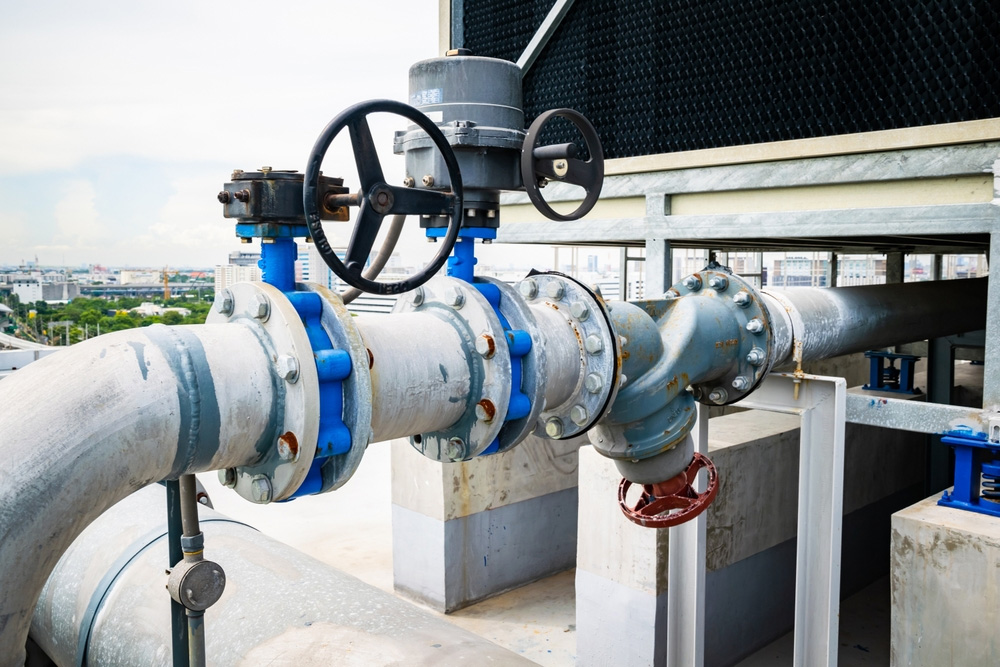Understanding Process Valves and Flow Control Systems

Valves and flow control systems are essential to operating many industrial processes. As such, it is vital to understand the basics of these systems and how they work.
This blog post will explore the different types of process valves & flow control systems, their essential components, and how they function in various applications. We’ll also discuss why it’s vital to properly install and maintain these systems to ensure safe and efficient operation. By the end of this post, you should have a better understanding of valves and flow control systems and how to use them to optimize your industrial processes.
What are process valves?
Process valves are mechanical devices that control the flow of fluids in a process system. They regulate the pressure, temperature, and flow of liquids and gases. Process valves are essential in many industries, such as oil and gas, food processing, and pharmaceutical manufacturing.
Process valves regulate the flow rate, reduce pressure, and control the temperature of a process system. They can also help ensure safety, prevent contamination, and optimize efficiency.
How do flow control systems work?
Flow control systems regulate the rate and direction of flow in a process system. They do this by controlling the pressure, temperature, and speed applied to the process. Generally, flow control systems involve valves, actuators, and controllers that can regulate the flow of liquid or gas.
Valves act as the main components of a flow control system, as they open and certain parts of the system close. Actuators are then used to open or close the valves while controllers adjust the flow’s pressure, temperature, and speed.
When these components work together correctly, a flow control system can maintain a desired flow rate and direction efficiently and safely.
What are the benefits of using process valves?
Using process valves is beneficial in a variety of ways. They provide precise control and monitoring capabilities, allowing operators to adjust the flow of liquids or gases in an industrial process. This helps to ensure that the right amount of material is processed at the right time.
Process valves also help to prevent system overload by controlling the flow of materials to avoid any pressure build-up. By doing so, they can help reduce the potential for equipment damage or system failure. Additionally, process valves can improve overall efficiency by allowing the system to operate with the most effective flow rate for each application.
How can I select the proper process valve for my application?
Selecting the proper process valve for an application can be daunting, but the task can be much more straightforward with the appropriate knowledge and understanding. The first step is to assess the conditions in which the valve must operate, such as temperature, pressure, and flow rate.
Once these parameters are determined, the type of valve must be decided. Different types of valves are designed to handle other conditions. For example, ball valves are typically used in applications with higher temperatures and pressures, while globe valves are better suited for controlling the flow rate and regulating pressure.
Additionally, certain materials, such as stainless steel for higher temperatures and pressures, may be required depending on the environment. Lastly, it is essential to consider any additional requirements, such as safety certifications or special features such as an emergency shutdown system. Considering all these factors, a suitable valve should be easily identified.
What are the most common types of process valves?
Process valves are essential for any system and come in various styles, shapes, sizes, and configurations. The most common process valves include gate, globe, ball, butterfly, check, needle, and diaphragm valves.
Gate valves are used to allow or restrict the flow of fluid in pipelines, while globe valves are designed to regulate the flow of fluid within a channel. Ball valves are characterized by their spherical closure element, which starts or stops the flow of liquid. Butterfly valves contain a disc-shaped closure element that rotates to control liquid flow.
Check valves are designed to prevent backflow in a pipeline and are commonly found in safety systems. Needle valves are typically used for accurate flow control and adjustments. Lastly, diaphragm valves contain a flexible diaphragm to open and close a valve port to regulate fluid flow. Each type of valve offers unique advantages, making it essential to select the correct valve for your application.
Conclusion
Process valves & flow control systems are vital in the manufacturing industry, ensuring that processes run smoothly, efficiently, and safely. By understanding how these devices work, you can better select the right one for your application. Depending on the needs of your project, there are various types of process valves available, each with its own unique benefits. With the proper knowledge, you can choose the best valve to meet your process’s requirements.

